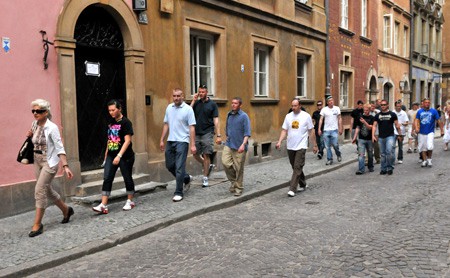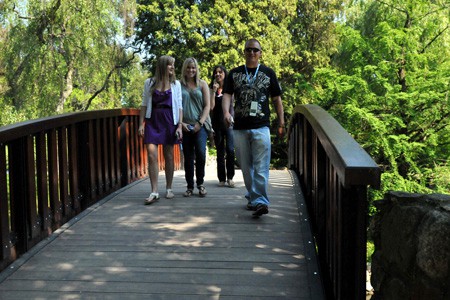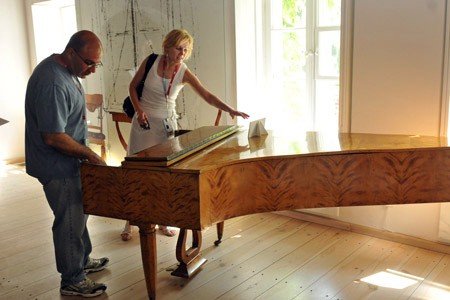
WARSAW, POLAND (05/24/2011)(readMedia)– Story and photos by Army Spc. Lisa Laughlin, 139th Mobile Public Affairs Detachment.
Illinois Army National Guard Soldiers with the Chemical, Biological, Radiological, Nuclear and High Yield Explosive Enhanced Response Force Package (CERFP), took a day to enjoy the cultural and historical sites in and around Warsaw, Poland May 22. The Soldiers are in Poland training with the Polish Land Forces as part the Illinois National Guard’s State Partnership Program.

Illinois CERFP Soldiers follow their guide May 22, through the streets of Old Town, the historic district of Warsaw, Poland. The Soldiers are in Poland for Epifaktor 2011, an emergency response exercise with the Polish Armed Forces.
The Soldiers learned more about the country they are working in and the Polish Soldiers they are working with in Epifaktor 2011, an emergency response exercise in cooperation with the Polish Armed Forces.
The Soldiers toured the museum and grounds at the birthplace of classical composer Fryderyk Chopin, Lazienski Krolewski (the royal residence), and took a guided tour through historic Warsaw.
Martin Limanowski of Warsaw, a contractor working for the Polish Army, said the tour, which centered around Chopin, was well chosen.

llinois CERFP Soldiers walk through the gardens at the birthplace of classical composer Fryderyck Chopin in Zelazowa Wola, Poland May 22. The Soldiers learned more about the history and the culture of Poland to understand their partnership with Poland.
„The birthplace of Chopin is important to see because Chopin is a composer (who) is famous throughout the world,” said Limanowski. „Even people from Japan or China are coming to Poland to see the birthplace of Chopin and his museum.”

Sgt. 1st Class Adam G. Abdul of Rockford, with the 135th Chemical Company and 2nd Lt. Agnieszka W?jtowicz of Warsaw, with the Biohazard Team, Epidemilogical Response Center, Polish Armed Forces look at a piano that was once owned by Fryderyk Chopin.
The Soldiers toured the royal garden park and the palace of the last Polish king. They also went to Old Town, which is the oldest section of the city.
Staff Sgt. Sarah L. Roman of Chicago, a squad leader and chemical operations specialist with the 135th Chemical Company in Machesney Park, said she was fascinated to see the older parts of Warsaw because Poland has a longer history than the United States.
„I thought it was really beautiful the way they built everything up. I guess we do the same thing in the United States but everything is newer,” said Roman. „You walk around downtown Chicago and the buildings are grandiose and beautiful, but they are all made of steel. It was cool to see the exposed brick that was original from before the war, that they made it illegal to destroy.”
For Spc. Paul D. Adams of Galesburg, a chemical operations specialist with the 444th Chemical Company in Galesburg, the Polish Tomb of the Unknown Soldier was the most important stop on the trip.
„The most interesting thing that I saw, for me, was the Tomb of the Unknown Soldier,” said Adams. „It was only partially rebuilt, because of the financial state of the country after World War II.”
Limanowski said this type of experience is key to helping the American Soldiers better understand their Polish counterparts.
„If you know the Polish culture, you know the Polish people; you know how we feel, how we work, and what is most important to us here in Poland,” said Limanowski.
Adams said he also felt the cultural day helped him to better understand the culture of the people he is working alongside.
„Actually getting to meet them face to face and interact with them and see their culture gives me a better understanding of how they work and act,” said Adams. „So, when we have a joint mission we can actually come together and mesh a lot better. It takes some of the bumps out of the road.”
